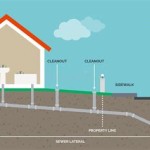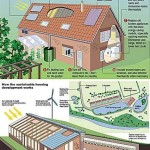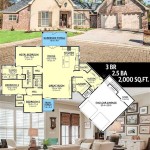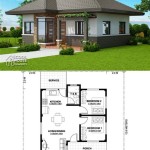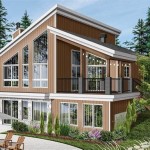```html
Simple House Plans: Affordable and Easy to Build
The allure of homeownership remains strong, yet the financial hurdles often seem insurmountable. However, the dream doesn't necessarily require a massive budget. Simple house plans, characterized by their straightforward designs and efficient use of space and materials, offer an affordable and easily manageable path to building a home. These plans prioritize functionality and ease of construction, making them attractive to first-time homebuilders, those on a tight budget, or individuals seeking a smaller, more manageable living space.
Many factors contribute to the affordability of simple house plans. Reduced square footage naturally translates to lower material costs. Simplified rooflines, rectangular footprints, and minimal ornamentation minimize labor required and decrease the potential for costly errors during construction. Choosing readily available and cost-effective building materials further enhances affordability.
The ease of construction associated with these plans also significantly impacts the overall cost. Simpler designs require less specialized labor, potentially allowing for some degree of owner-building or reliance on less expensive general contractors. The straightforward nature of the construction process also reduces the likelihood of unexpected delays or complications, both of which can quickly inflate a construction budget.
Prioritizing Functionality and Efficient Space Utilization
Simple house plans are not synonymous with cramped or uncomfortable living. Instead, they emphasize efficient use of available space. Open floor plans, for example, eliminate unnecessary walls and create a sense of spaciousness. Strategic placement of windows maximizes natural light, further enhancing the feeling of openness and reducing the need for artificial lighting. Thoughtful storage solutions, such as built-in shelving or under-stair storage, ensure that every square foot is utilized effectively.
Careful consideration is given to the flow of movement within the house. The layout is designed to minimize hallways and maximize usable living areas. Rooms are strategically positioned to optimize natural light and ventilation. The connection between indoor and outdoor spaces is also often considered, with the inclusion of patios or decks that extend the living area and provide opportunities for outdoor enjoyment.
The functionality of a simple house plan extends to the selection of appliances and fixtures. Energy-efficient appliances reduce long-term operating costs, while durable and low-maintenance materials minimize the need for repairs or replacements. The focus is on practicality and efficiency, ensuring that the home is both comfortable and cost-effective to operate.
Choosing the Right Simple House Plan
The selection of a suitable simple house plan requires careful consideration of individual needs and preferences. Factors such as family size, lifestyle, and budget should all be taken into account. Numerous resources are available to assist in the selection process, including online plan providers, local architects, and building contractors.
Online plan providers offer a vast selection of pre-designed simple house plans, often with customizable options. These plans typically include detailed blueprints, material lists, and construction specifications. It is important to carefully review the plans and ensure that they meet local building codes and regulations.
Consulting with a local architect can provide personalized guidance and ensure that the chosen plan is tailored to specific site conditions and individual needs. An architect can also assist with obtaining necessary permits and approvals. Working with a reputable building contractor is essential to ensure that the construction process is handled professionally and efficiently.
When evaluating different simple house plans, it is crucial to consider the long-term implications of the design. Factors such as energy efficiency, durability, and maintenance requirements should all be taken into account. Choosing a plan that minimizes long-term operating costs will provide significant savings over the life of the home.
Cost-Effective Building Materials and Techniques
The selection of building materials significantly impacts the overall cost of construction. Choosing readily available and cost-effective materials is essential for maintaining affordability. Options such as wood framing, vinyl siding, and asphalt shingles are generally less expensive than more elaborate materials like steel framing, brick veneer, or tile roofing.
Utilizing cost-effective construction techniques can also help to reduce building expenses. Simple framing techniques, such as stick-built construction, are often more affordable than pre-fabricated building systems. Minimizing the complexity of the roofline and foundation can also significantly reduce labor costs.
Recycled or reclaimed materials can also be a cost-effective and environmentally friendly option. Reclaimed lumber, for example, can be used for flooring, siding, or trim, adding character and reducing the demand for new materials. Salvaged bricks or stones can be used for landscaping or building retaining walls.
Owner-building can also be a significant cost-saving measure. By performing some of the labor themselves, homeowners can reduce the amount of money spent on contractors. However, it is important to have the necessary skills and experience to perform the work safely and effectively. Tasks such as painting, landscaping, and interior finishing are often suitable for owner-building.
Energy efficiency is paramount in modern construction. Simple house plans can readily incorporate energy-saving features like proper insulation, energy-efficient windows and doors, and high-efficiency HVAC systems. These features reduce long-term utility costs, contributing to the overall affordability of the home.
Proper insulation is crucial for maintaining a comfortable indoor temperature and reducing energy consumption. Insulating walls, ceilings, and floors helps to prevent heat loss in the winter and heat gain in the summer. Energy-efficient windows and doors minimize air leakage and reduce the need for heating and cooling.
High-efficiency HVAC systems, such as heat pumps or geothermal systems, can significantly reduce energy consumption for heating and cooling. These systems are more expensive to install than traditional HVAC systems, but they offer substantial long-term savings.
Simple house plans are an accessible pathway to homeownership for many individuals and families. By prioritizing functionality, efficient space utilization, and cost-effective building materials, these plans offer an affordable and manageable option for building a comfortable and sustainable home. The focus on straightforward design and ease of construction allows for potential cost savings through reduced labor and minimized construction complications.
```
The Best Ways To Utilize 10 Low Budget Simple House Design

Affordable House Plans Monster

Cecile One Story Simple House Design Pinoy Plans

3 000 Square Foot House Plans Houseplans Blog Com

20x20 Small House Plan 6x6m With 2 Beds 1 Bath Plans 3d

Unique Small House Plans A Frames Cabins Sheds Craft Mart

Draw Floor Plans With The Roomsketcher App

20x20 Small House Plan 6x6m With 2 Beds 1 Bath Plans 3d

Kerala Home Design House Plans N Budget Models

20x20 Small House Plan 6x6m With 2 Beds 1 Bath Plans 3d
Related Posts


